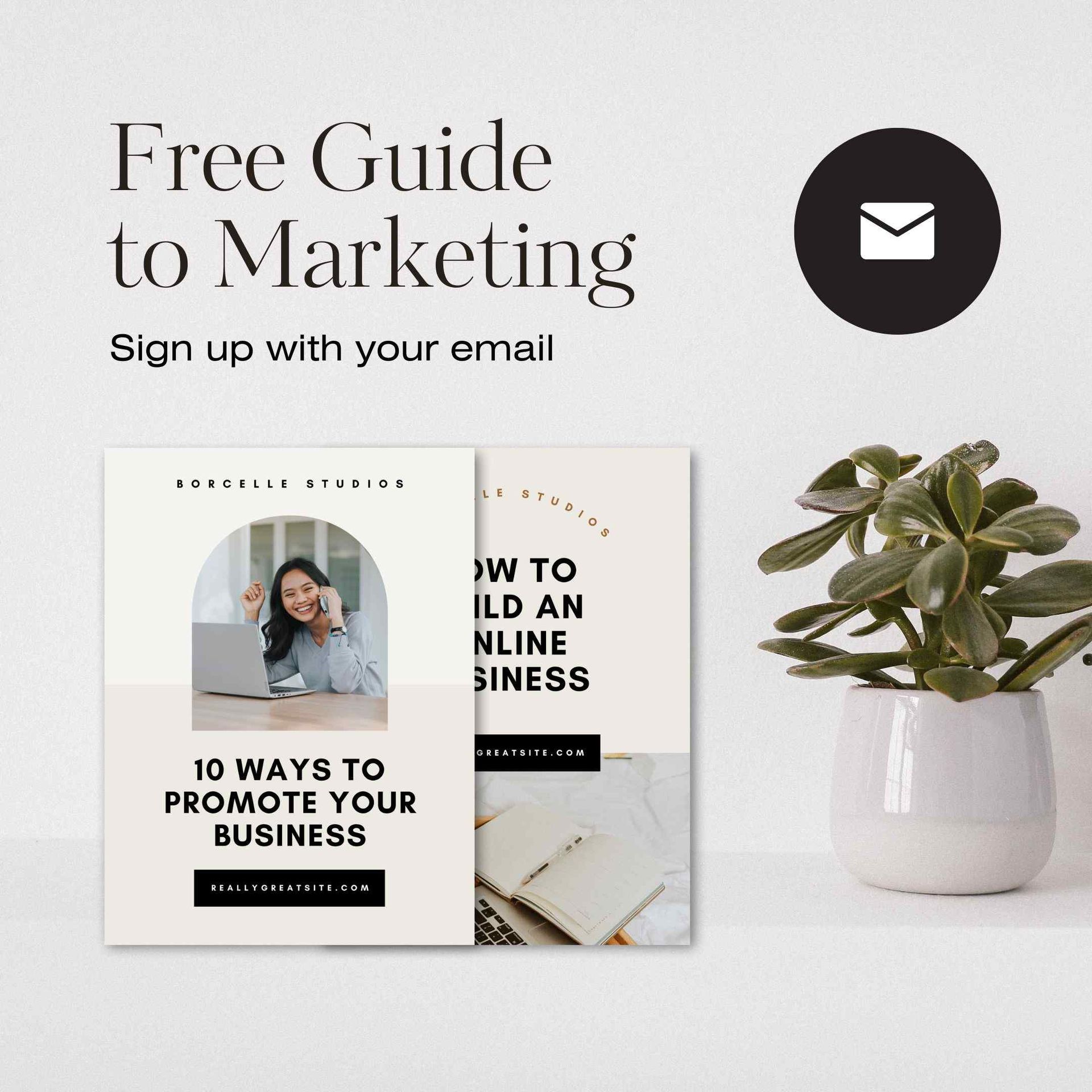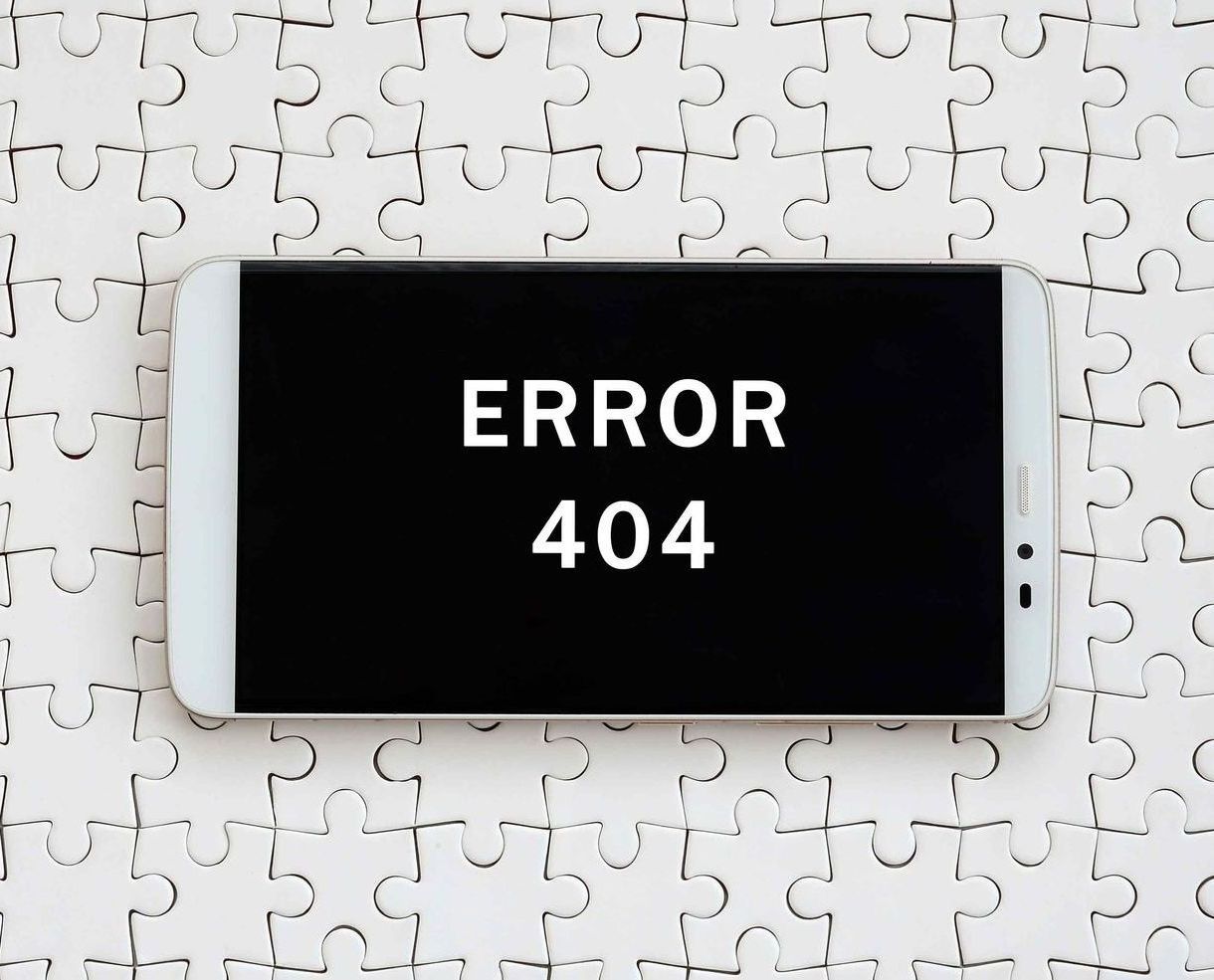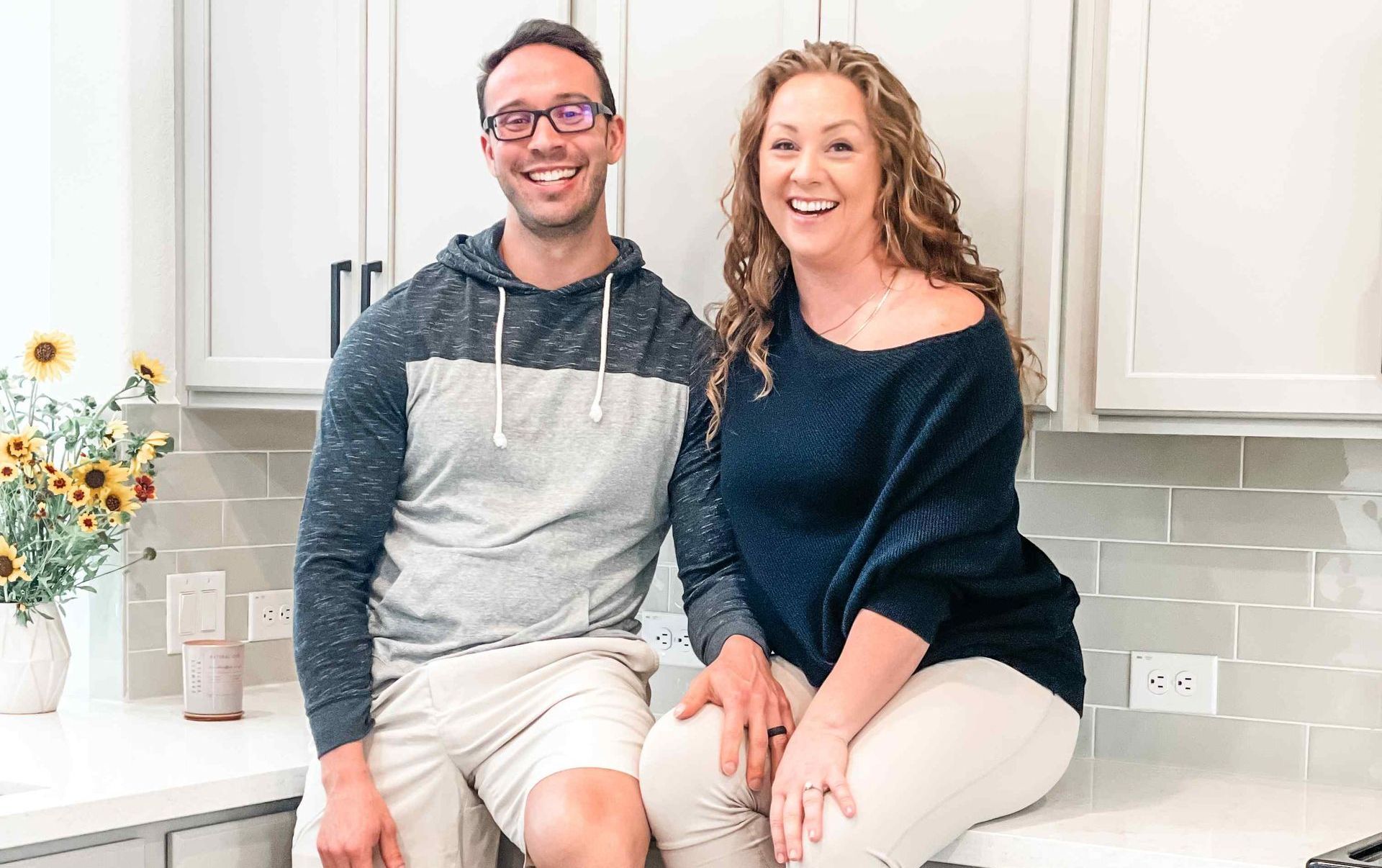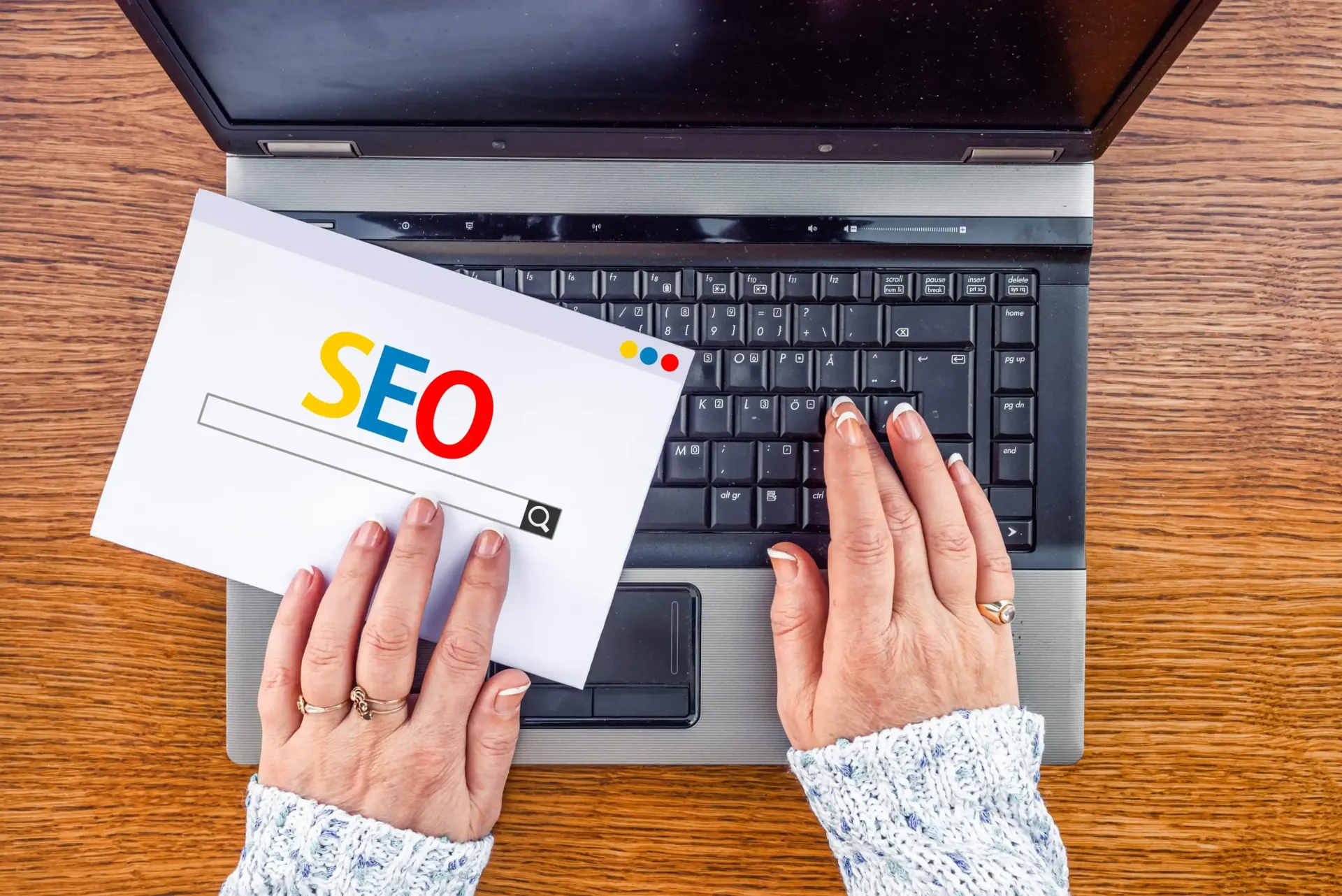How to Build an Evergreen Email List Without Social Media
TL;DR: How to Build an Evergreen Email List Without Social Media
Relying on daily social media posting is exhausting and unstable.
An evergreen email list gives you long-term control, letting your business grow even when you're offline.
This guide walks you through:
- Creating a lead magnet that solves a real problem
- Building a landing page that converts visitors into subscribers
- Using SEO and blog posts to drive traffic instead of algorithms
- Embedding opt-ins across your site to grow your list passively
- Automating and personalizing email sequences to nurture trust and drive sales
Email is a direct, 1:1 communication channel landing in your audience’s inbox rather than getting lost in a feed.
It builds stronger, more personal relationships and gives you full ownership over how and when you connect.
The result? A business that scales quietly, reliably, and sustainably. Without the burnout.

When I burned out and stopped posting on social media, everything slowed down for my fitness coaching business.
The DMs.
The engagement.
The leads.
It wasn’t just frustrating, it was a wake-up call.
I realized I didn’t have a business.
I had borrowed attention.
The second I stopped posting on social media, that attention disappeared. My stream of fitness coaching leads became a trickle.
If your business depends on daily posts just to stay visible…
If your energy is consumed by posting, engaging, and going live…
It’s time to build something that doesn’t disappear when you log off.
It’s time to build your email list. But not just any list.
An evergreen list.
One that grows your target audience on its own.
One that nurtures leads while you live your life.
One that helps you sell without chasing trends or fighting algorithms.
Let’s build it step by step so that if you decide to slow down on social media, your business doesn't suffer the same fate as my fitness coaching business.

Why an Evergreen Email List Is the Foundation of a Real Business
Unlike your social media followers, your email list belongs to you.
No algorithm.
No visibility rollercoaster.
No waiting for likes, comments, or trending audio to get noticed.
Your list is:
- A direct line to your audience
- A place to build real, ongoing connection
- A system you can automate to nurture and convert leads on autopilot
And perhaps most important?
Email is a 1:1 communication channel.
Even if you’re sending a broadcast message, each subscriber receives it individually, in their inbox, in their space.
That makes the relationship feel more personal, more intentional, and far more trustworthy than a public post seen by thousands but forgotten in seconds.
On social media platforms, you're speaking 1:many.
With email, you're speaking
1:1. It's not quite as good as speaking to someone 1:1 in person, but it definitely beats 1:many on social media.

How to Do It: Build an Evergreen Email List Without Social Media
Let’s break it down into a clear, actionable plan you can follow at any stage of your business. This is the basis of your email marketing strategy.
1. Create a Lead Magnet That Solves a Real Problem
A lead magnet is a free resource that is the bridge between visibility and connection.
It’s not just a freebie. It’s the
first real touchpoint where a stranger becomes a potential client.
It’s where curiosity turns into permission—and that permission becomes a relationship.
But here's the thing:
Not every free freebie grows your list with the right people.
And not every freebie builds trust.
If you want to build an evergreen list that attracts your target audience and naturally guides them toward your offer, your lead magnet needs to do more than look good.
It needs to
solve something specific your ideal client struggles with.
What Makes a Lead Magnet Work?
Your lead magnet should be:
- Highly relevant to your core offer
If you help people build online businesses, don’t offer a meal plan.
If you sell SEO services, don’t offer a time management worksheet.
Stay close to the pain point your core offer solves. - Simple to consume (5–15 minutes max)
If it takes too long to get value, it won’t get used—and they won’t remember you.
Think quick wins. Think fast results. - Actionable with a clear outcome
Your lead magnet should help them do something. Not just learn.
Think: checklist they can complete today, worksheet they can apply, or script they can send.

Freebie Formats That Convert
Choose a format that matches your target audience’s attention span, learning style, and urgency.
Examples:
- A checklist (e.g., “10 Must-Haves for Your Coaching Website”)
- A 3-day email mini-course (automated, low-effort for you)
- A quick tutorial video (great for visual learners)
- A swipe file or script (copy-and-paste value is high value)
- A short workbook or PDF (include exercises they can complete)
- A quiz or diagnostic (e.g., “Find Your Content Marketing Blind Spot”)
- A one-page roadmap or process overview
Pro Tip:
You don't need to share all the details. The simpler and more specific it is, the better it converts.
Think of It as a Taste of Your Transformation
Your lead magnet isn’t just about giving something away.
It’s about giving a preview of what it’s like to work with you.
- It should reflect your process.
- It should align with your tone and teaching style.
- It should solve a small part of a bigger problem—and leave them wanting more.
If your freebie is vague, too long, or off-brand, you’ll either confuse people or attract the wrong target audience.
Questions to Craft the Right Lead Magnet
Use these to brainstorm and filter your ideas:
- What’s the #1 question current customers ask before hiring me?
- What’s one small win I give clients during our first session?
- What do I repeat over and over in DMs, sales calls, or consults?
- What problem does my core offer solve—and what’s the first step?
- If I only had 10 minutes to help someone, what would I teach them?
Build your lead magnet around that.
When you do it right, your freebie becomes a magnet for people who are already
searching for your solution—and eager to take the next step.

2. Build a Simple Landing Page That Converts
Once you’ve created your lead magnet, you need a place to deliver it—your landing page.
This isn’t your homepage.
This isn’t your Instagram bio link tree.
This is a
dedicated page with one job only: to get your ideal client to say “yes” and join your list.
Let’s break it down.
What Makes a Landing Page Convert?
A high-converting landing page includes:
A Clear, Benefit-Driven Headline
This is the first thing visitors read. It should instantly communicate what they’ll get and why it matters. It should also include relevant keywords your target audience is typing into search engines.
Example: “Get My Free 5-Step SEO Starter Checklist—Start Ranking in Just 30 Days”
A Subheadline That Builds Curiosity
Back up the headline with one sentence that addresses the pain point or result.
“Perfect for coaches and creators ready to grow without relying on social media.”
A Visual of the Lead Magnet
Show a mockup, PDF preview, or thumbnail. Potential customers are more likely to opt in when they can see what they’re getting.
A Bullet List of What’s Inside
Make the value concrete. Show them exactly what they’ll learn, avoid, or fix.
- Identify the keywords your dream clients are already searching for
- Get a step-by-step SEO game plan (no tech skills needed)
- Start driving organic traffic—without spending a cent on ads
A Short, Easy Email Sign up Form
Only ask for what you need. Typically, that’s just a name and email address in a sign up form.
If you’re just starting, keep it frictionless. Don’t overwhelm them.
A Bold Call-to-Action Button
This should match the promise of your freebie.
“Send Me the Checklist”
“Start My SEO Strategy”
“Yes, I Want the Guide”
Make it specific and action-oriented.
Tips to Make Your Landing Page More Effective:
- Remove distractions – No navigation menu, no footer. This page has one job.
- Use testimonials or social proof – If you’ve helped people before, show it.
- Test mobile view – More than 60% of your traffic will come from mobile.
- Use contrasting colors – Make sure your button stands out.
Recommended Tools to Build Your Landing Page:
- ConvertKit – built-in landing pages, integrates with email
- MailerLite – drag-and-drop builder, easy for beginners
- Flodesk – aesthetic templates, great for creators
- Systeme.io – free all-in-one tool that includes landing pages and automation
You can build your first page in under an hour.
And once it’s done, it works 24/7.

3. Use SEO to Drive Organic Traffic
This is where we stop relying on social media and let your website and blog carry the weight.
A. Build and Optimize a Website That Works for You
You can’t fully leverage SEO or grow an evergreen email list without a website that’s built to do more than look pretty.
Your website isn’t just a digital business card.
It’s your platform. Your sales tool.
Your always-on lead generator.
And if it’s not optimized for both user experience and search engines, it won’t matter how great your posts on your blog are, because no one will find them.
Let’s walk through what matters most.
1. Start with Simple, Strategic Structure
Your website should be clear, intentional, and easy to navigate.
Think of it like a map, not a maze.
Pages to include:
- Homepage: A quick overview of what you do and who you help, with a clear CTA to join your list.
- About page: Share your story and values. Link to your freebie mid-way through.
- Services/Work With Me: Explain your offer, and include an opt-in for those who aren’t quite ready to buy.
- Blog: The home of your SEO strategy. Every post should serve a purpose and provide helpful and educational content that is personalized based on your experiences.
- Contact page: Make it easy for people to reach out, ask questions, or book a call.
Use clear menus, descriptive page titles, and don’t over-clutter your navigation bar.
2. Optimize for Search Engines (Without Getting Techy)
You don’t need to be an SEO expert to make your website search-friendly.
Here’s what to focus on:
- Page titles and meta descriptions: Use keywords your audience is actually typing into Google.
- Create content: Let's keep it simple. Create written content for your pages that your website visitors find helpful.
- Header tags (H1, H2, H3): Break up content and signal importance to search engines.
- Image alt text: Helps with SEO and makes your site more accessible to those with visual impairments.
- Fast loading time: Use compressed images and a clean theme. Tools like PageSpeed Insights can help you test performance.
- Mobile responsiveness: Over half your traffic will come from phones. Make sure everything looks clean and functions well.
SEO is about more than stuffing keywords.
It’s about
making your content easy to find and easy to understand for both users and search engines.
3. Make It Easy to Update and Expand
If you're going to use your website to grow your list with evergreen content, it needs to evolve with your business.
That means choosing a platform that's easy to manage.
Recommended platforms:
- WordPress (with a drag-and-drop builder like Elementor or Divi)
- Showit (great for visual creatives)
- Duda (streamlined and simple for business owners and non-technical users)
- Webflow (for more tech-savvy users)
Choose what matches your comfort level.
You’re not building a static site. You’re building a long-term marketing machine that will evolve over time.
A website optimized for SEO and lead generation doesn’t just “look nice.”
It
brings in website visitors, captures subscribers, and works while you rest.
That’s what building for evergreen growth actually looks like.


B. Write Blog Posts That Answer Real Questions
Use keyword tools like:
- Google autocomplete
- Ubersuggest
- Answer the Public
- Google Keyword Planner
Find what your ICA is already searching for.
Then write blog posts that answer those exact questions and include your freebie as the next step.
Example:
“If you’re ready to grow your coaching business without daily posting, grab this free checklist: 5 Steps to Start Your Evergreen Funnel.”
You can take blog posts even further by writing guest blog posts. Guest blogging is writing posts that are featured on another person's website. They expand your reach to get new subscribers to your email list. Just be sure that the guest posts are featured on a website that caters to a similar target audience.
C. Use Internal Links to Drive Visibility
Add links to your landing page from:
- Other blog posts
- Your homepage
- Your about page
- Your service page
Every link increases the chances that someone new finds your freebie without you having to post or promote anything.
Bonus: How to Use Your Email Signature to Grow Your Email List
You send emails every day—to clients, collaborators, leads, and even casual inquiries.
But if your email signature isn’t working for you, it’s a missed opportunity.
Your signature is
prime real estate.
It’s seen by almost every person you correspond with, and it’s often overlooked as a way to drive email list growth.
Let’s fix that.
Add a Link to Your Lead Magnet in Your Email Signature
The simplest way to turn your signature into a growth tool is by linking directly to your lead magnet.
Use clear, benefit-driven language. Not vague links.
Examples:
- → Get my free SEO checklist to boost your traffic
- → Download the 5-step guide to growing without social media platforms
- → Start your evergreen email funnel—free workbook included
Keep it short. Keep it punchy. And make sure the link stands out visually from the rest of your signature (bold text, emoji arrows, or line breaks help).
What to Include in Your Signature
Here’s a simple formula that balances professionalism with conversion:
- Your name
- Title or business name
- Website link
- Social handle (optional)
- CTA to your freebie with hyperlink
Example:
Amanda Jantzen
Co-Founder | AP Digital Service
www.apdigitalservice.com
→ Get the free guide: How to Build an Evergreen Email Funnel
You’re already sending the emails. Let your signature do the passive lead gen for you.

How to Leverage Your Website to Grow Your Email List (Without Adding More Work)
If you're like some of the creators we work with, your website is already live.
You probably have a homepage, an about page, a services page, maybe even a blog.
But is your website quietly converting visitors to build your list in the background?
Or is it just sitting there like a digital brochure?
Because here’s the truth:
Every single page of your website is an opportunity to grow your email list
without creating anything new.
Let’s walk through how to turn your existing site into a list-building asset.
Add Strategic Opt-In Forms Across Your Site
Not every visitor will land on your dedicated landing page.
But every visitor should have a way to join your list—no matter where they land.
Here’s where to add opt-in forms that feel natural and intentional:
- Homepage banner or hero section:
A short sentence and one button: “Grab the free SEO checklist” - About page sidebar or footer:
Turn your story into a lead magnet invitation: “Want to learn how I grew without Instagram? Download the free guide.” - Service page section:
If they’re not ready to book, give them a way to stay connected: “Not quite ready to work together? Start with this free resource.” - Blog post scroll-in form:
Use a subtle opt-in that appears halfway through a post, right when they’re engaged. - Exit-intent popup (tastefully designed):
Trigger a pop-up only when someone’s about to leave your site. Offer your best freebie before they go.

Use Embedded Lead Magnet Offers Instead of Generic Newsletters
You’ve probably seen (and maybe used) the old-school opt-in that says:
“Sign up for updates.”
Here’s the problem: nobody wants updates.
They want value. Now.
So instead of a vague “join my list” form, embed your lead magnet into multiple parts of your site. Make it the focal point of your opt-in strategy.
- Example swap:
❌ “Join my newsletter”
✅ “Download the Free 5-Step SEO Checklist for Coaches and Creators”
The difference? One feels like a chore. The other feels like a win.
Add a Sticky Call-to-Action Bar or Slide-Up Widget
If someone’s engaged and scrolling, don’t interrupt them with a big pop-up.
Instead, use a
slide-up or sticky CTA bar that gently prompts them to grab your freebie.
Tools like ConvertBox, Hello Bar, or even your email provider can do this.
- Position it at the bottom of the screen.
- Make the copy benefit-focused.
- Allow it to be closed if someone’s not interested. Don’t annoy your potential customers.
This one tweak can turn casual traffic into warm subscribers without hurting the user experience.


Turn Your 404 Page Into a List-Building Opportunity
Most people overlook this entirely.
But if someone lands on your site and finds a broken link or typo, they’re usually gone in seconds.
Unless… you give them a reason to stay.
Try this:
“Well, this page doesn’t exist… but since you’re here, grab my best free resource to [solve X problem]. It’s helped hundreds of [your audience type] do [specific result].”
Add an embedded subscription form or button.
Now your 404 page is building your list instead of bouncing traffic.
Add an Email List CTA to Your Website Footer
It’s one of the most visited parts of your site, especially by mobile users and browsers looking for contact info.
Don’t waste it.
Use a simple call-to-action like:
“Ready to grow your business without social media? Download the free evergreen funnel checklist.”
Even if it only captures a small percentage of traffic, your footer runs 24/7, quietly doing the work for you.
Final Tip: Make It Stupid-Simple to Join
If someone reads your blog, explores your services, or learns about your story and resonates with your message, they should never have to find a way to stay in touch.
Every part of your site should pass the test:
“Is it obvious how to get the next step?”
Because that “next step” is the beginning of your evergreen funnel to capture new email subscribers, and eventually new customers.
And when done right, your website becomes more than just an online presence.
It becomes a list-building machine that works even when you’re not online.

How to Nurture Your Evergreen Email List (and Why Email Is More Personal Than Social Media)
Getting more subscribers for your email list is just the beginning.
The real magic happens in how you communicate with them afterward.
Let’s talk about nurturing with email marketing, and why it’s far more powerful than social content.
Why Email Is a 1:1 Relationship Builder (Even When It’s Automated)
On social media, your posts compete with hundreds of others in a feed.
You’re talking to a crowd. Always.
But with email?
You’re in someone’s inbox.
You’re addressing them directly.
You’re building trust through quiet, consistent presence.
Email feels personal, because it is.
Even if you're sending to thousands, each person opens it like a private message.
They can reply. Ask questions. Share thoughts.
This is the difference between broadcasting and connecting.
If you want depth, loyalty, and long-term clients, email is where that relationship grows.
1. Set Up a Welcome Sequence
The first 5–7 welcome emails your subscriber receives are the most important.
This is where you go from “random freebie” to “I’m glad I joined your list.”
Your welcome sequence should:
- Deliver the freebie
- Introduce you and your mission
- Reinforce the quick win
- Share a short story or client result
- Provide additional value
- Invite them to take the next step with you
Write like you speak.
Be warm. Be clear. Be human.
2. Provide Value Before You Sell
This is where most creators get it wrong.
Email nurturing is not just sending newsletters.
It’s
building trust through useful, relevant content.
What can you send?
- How-to guides
- Personal stories that teach
- Client case studies
- Answers to common questions
- Encouragement or mindset tips
- Behind-the-scenes updates
The key is staying relevant and generous, so that when you do sell, it feels natural, not pushy.


3. Automate Your Evergreen Sequence
You don’t have to manually send every email.
Once your welcome sequence and first few value emails are written, automate them.
Email Marketing Software That Makes Automation Easy:
- ConvertKit – visual email flows, tagging, and segmentation
- MailerLite – strong free plan, automation builder
- Flodesk – beautiful templates, simple workflows
- Systeme.io – includes landing pages + email + automation
Set it up once. Let it run. You can always refine later.
4. Segment and Personalize Over Time
As your list grows, segmenting lets you customize the experience.
You can tag subscribers by:
- The freebie they opted in from
- The topics they’ve clicked on
- Where they are in the buying journey
Segmentation = better open rates, fewer unsubscribes, and more conversions.
Even small tweaks, like using their first name or sending content based on interest, can make a big difference.

How Email Marketing Can Leverage Your Existing Content Marketing
One of the biggest missed opportunities for creators and online business owners is thinking that email marketing has to be a separate strategy from content marketing.
It’s not.
In fact, email marketing works best when it’s built on top of the content you’ve already created.
And if you’ve been consistently putting out blog posts, podcast episodes, videos, or social media content, then you already have valuable content to start sending emails.
Let’s break this down.
Repurpose Your Evergreen Content Into Email Sequences
Every piece of content you’ve created, whether it was for a blog, Instagram post, podcast, or YouTube video, can be reused in your email marketing strategy.
Here’s how:
- Turn your most popular blog post into a short, 3-part email series
- Break down a long-form video into bite-sized email lessons
- Use quotes, tips, or insights from an Instagram carousel to kick off a weekly newsletter
- Add “bonus” context to an older blog post and send it out to your list with a fresh subject line
You don’t need to reinvent the wheel every week.
You just need to reshape what you already have into a format that feels personal. That’s what email allows you to do better than any other platform.

Nurture Deeper 1:1 Relationships
This is where email becomes your most powerful tool.
When someone reads your email, it doesn’t feel like a broadcast.
It feels like a message from
you to them.
Unlike social media, where content is consumed in public, email is private.
And that privacy makes people feel safer engaging, replying, and eventually buying.
When you use email marketing to expand on your existing content, especially when that content is educational, encouraging, or problem-solving, you build trust.
You’re not just another voice in the feed.
You’re someone they know, like, and look forward to hearing from.
Drive Sales Through Consistent, Value-Driven Messaging
The people on your email list didn’t stumble on your content by accident.
They chose to join. They invited you in.
And when you nurture that relationship by repurposing content that is useful, timely, and relevant, sales become a natural next step.
Email gives you space to:
- Teach → So they see your authority
- Tell stories → So they feel connected
- Share testimonials → So they believe you
- Make offers → So they take action
Even a single blog post you wrote months ago can become a powerful sales asset when reintroduced to your email list in a new format. Add a direct CTA to work with you, purchase from you, or click a sign up link to get a freebie.
You’re turning your email marketing system into a conversion system and doing it in a way that feels like a real conversation, not a pitch.
Final Thoughts: Your Evergreen Email List Is the Quiet Engine That Scales Everything
This isn’t about quitting social media cold turkey like I did after I burned out.
It’s about reducing your reliance on social media and building
something that works when you rest.
You don’t need a massive audience.
You don’t need a viral reel.
You need:
- One freebie
- One landing page
- One blog post
- One email sequence
That’s the start of an ecosystem.
Your list grows through SEO.
Your nurturing emails build trust with helpful, high quality content.
And your offers convert quietly because your audience is already warmed up.
👉 Book Your Free Strategy Call
If you're ready to grow beyond social media, let’s map out your evergreen funnel and build the email list that works while you rest.
We’ll help you identify the right freebie, set up your landing page, optimize your website, and write a nurture sequence that feels personal and actually converts.











